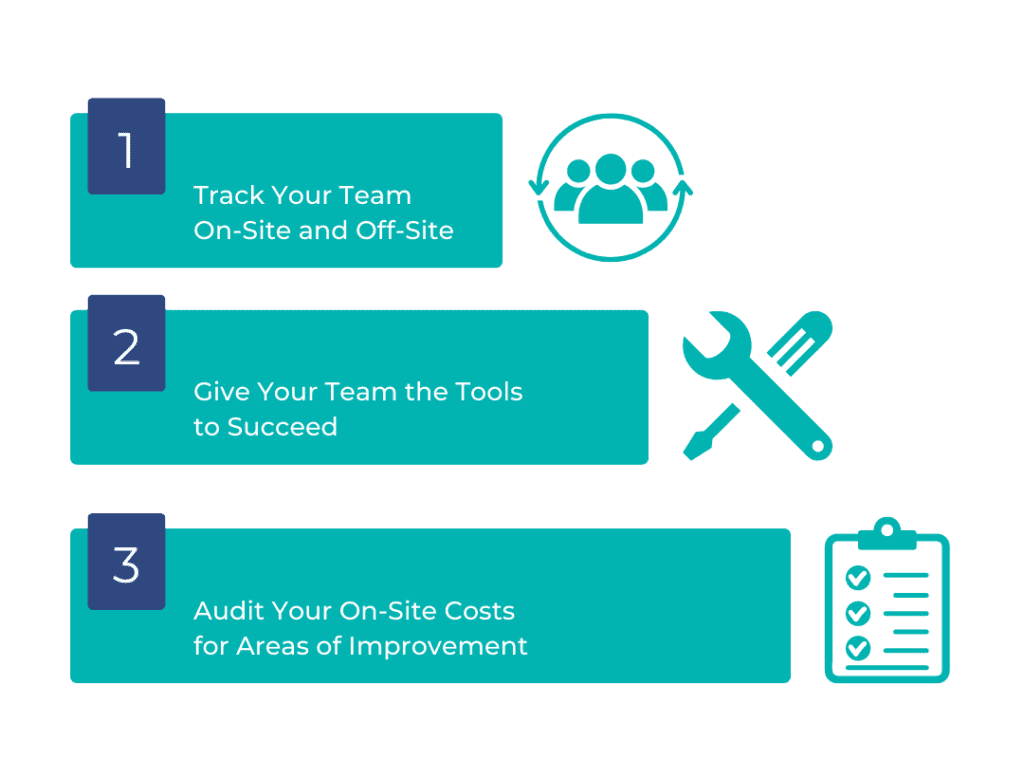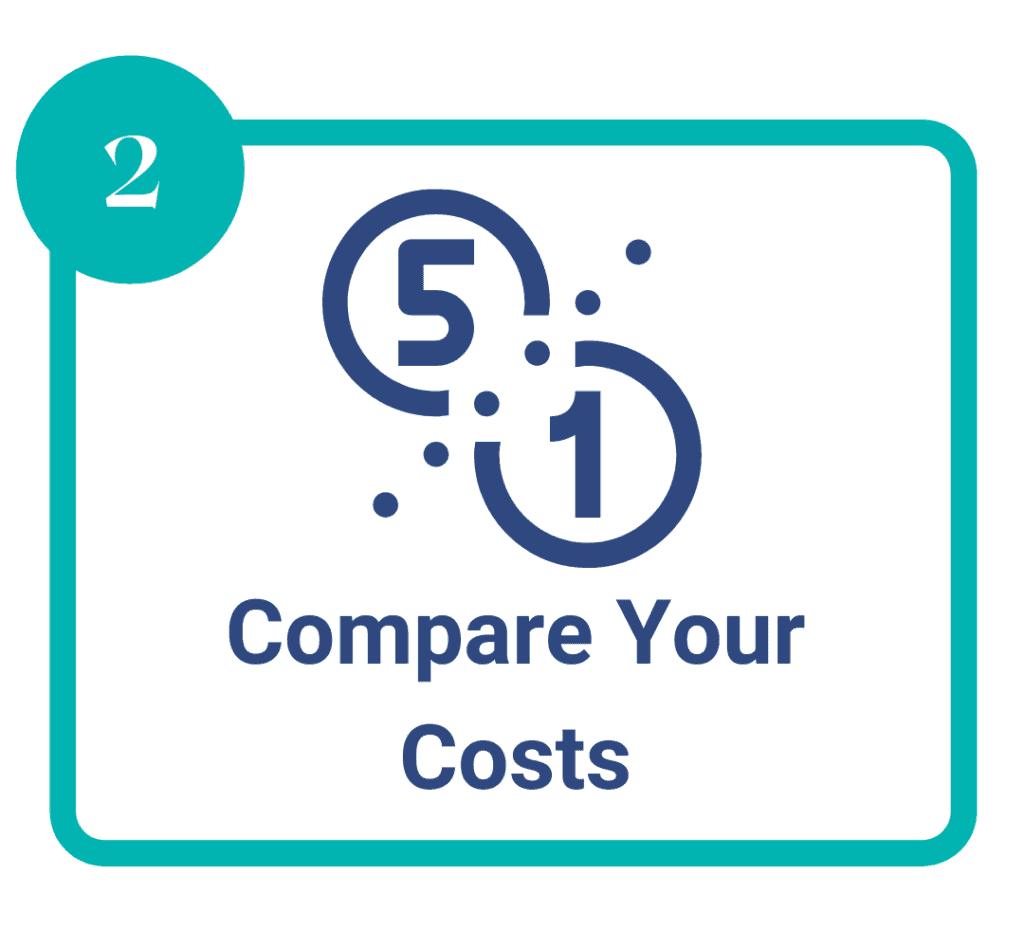Accurate Time Tracking Is So Much Easier With Workyard
For a construction company, cost reduction isn’t just about increasing profits. Everything from the economy to the seasons can impact construction companies. By reducing your construction costs, you create a more resilient company.
What can you do to reduce your construction costs while still growing your business? Let’s take a look at three major areas where you can reduce your costs: labor, materials, and equipment.
Improve Your Team’s On-Site Efficiency
Even with material costs in mind, your team is likely the largest expense on your books. Labor costs can be significant, especially if you frequently find your organization slipping into overtime.
| CASE STUDY Accord Group saved hundreds of work hours every week by using Workyard’s GPS tracking solution to better inform their scheduling and dispatch teams. Now they’re able to route their employees by proximity, not only reducing their labor costs but also improving the experience for their clients. |

1. Track Your Team Both On-Site and Off-Site
With Workyard, you can use GPS tracking technology to track your team on-site and off-site. Always know where they are, which projects they’re working on, and whether they could be better utilized—while also ensuring that their reported hours are correct.
2. Give Your Team the Tools They Need To Succeed
Consider purchasing equipment that will make your team’s job faster. It may be better to invest in a $1,000 piece of equipment if it’ll save you $5,000 in lost work hours. This is especially true if those tools can prevent your team from slipping into overtime hours.
3. Audit Your On-Site Costs for Areas of Improvement
Look through your on-site costs to identify areas of improvement. Is your team as effective as it can be? Use Workyard to compare employee and team performance on similar jobs. Are certain teams moving much faster than others?
| CASE STUDY At D&S Electric, they were able to eliminate $1,500 per employee every year in over-reported and misreported employee time. Workyard’s GPS tracking technology reduced overtime and ensured that hours were reported accurately by all employees. |
Reduce the Amount You Spend on Materials
In 2021, many construction materials saw double-digit percentage price increases. Although there is no going around getting the materials you need, there are methods you can use to reduce the amount you’re spending.



4. Purchase Materials in Bulk When You Can
Nails. Sandpaper. Plywood. If you know that you’ll need something in the future, purchase it in the largest lots you can—just make sure you have the storage ready. If something is steadily increasing in value (such as plywood), it may be better to stock up while you can.
5. Compare Costs at Different Suppliers
Create a spreadsheet of the different supplies you need and the suppliers that you get them from. Regularly update your spreadsheet with the associated costs. Over time, you’ll develop an index of the cheapest prices for all your most frequent supplies.
6. Use Just-in-Time Purchasing Strategies
Just-in-time purchasing means that if you need something small—or something that you use infrequently—and don’t need it immediately, you put off the purchase until it’s necessary. This avoids overstocking on supplies that you may not need.
Manage Your Equipment More Effectively
How much thought do you put into whether you should rent or buy equipment? Do you have processes in place to maintain your equipment, once purchased? Acquiring, maintaining, and deploying equipment is all expensive.

7. Consider the Costs of Renting vs. Buying
Do you have pieces of equipment you need to rent virtually every time you go on-site? Are there other pieces of equipment that you keep locked in a storage shed 95% of the time? Before you purchase something, calculate whether it would be better to rent or buy it. You could be wasting money renting, or you could be making purchases you don’t need.
8. Buy High-Quality Equipment the First Time
Think about how much time you spend repairing old or poor quality equipment. Is it worth it? You don’t need to get the most expensive model—but getting high-quality equipment the first time means that you’ll experience fewer breakdowns, spend less on repairs, and reduce disruption to your business.
9. Track the Upkeep of Your Equipment
Don’t just maintain your equipment when it breaks. Create a system of processes for the upkeep of your equipment and assign those tasks to your employees. The better maintained your equipment is, the longer it lasts. The longer it lasts, the more your company will save.
Construction Company Cost Reduction With Workyard
You can plan, manage, and audit your materials and your equipment as much as you want, but labor is always going to be the most volatile expense. It can be difficult to control how long a job takes in terms of raw hours—especially if you don’t have the right controls in place.
Workyard can help you:
- Automatically track employee hours via GPS. Never chase employees down for their hours again—and always know that the hours are accurate.
- Identify which employees may reach overtime. Reduce the total amount of overtime you’re paying while still getting the same work hours.
- Compare your on-site hours and your off-site hours. Audit how long employees are spending on administrative and non-billable tasks.
- See where your team is at all times. Swiftly deploy team members where they’re most needed to improve the efficiency of your labor.
Workyard understands that for a construction company, cost reduction is a top priority. Workyard is an all-in-one construction time tracking suite built from the ground up exclusively for the construction industry.
Did you find this post helpful? Please rate it!




 (No Ratings Yet)
(No Ratings Yet)
